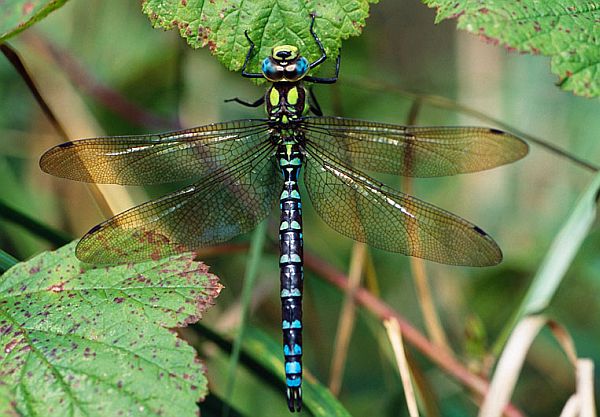Information from Estonian Environment Agency
Photo: Arne Ader
Translation Liis
Photo of migrant hawker.
Last Friday the Kabli Bird Station finished the seasonal preparation work and the autumn migration of birds was officially opened.
The wildlife specialists of the Environmental Agency and the Estonian Environmental Board set up the Heligoland traps where at once the first migrant entered –a migrant hawker (Aeshna mixta) (photo). As the first guest we thus had the most numerous dragonfly species that has been caught in the Kabli Bird Station in various autumn seasons. While for many years only the migration of birds was studied at Kabli, now studies of dragonflies, butterflies and bats have been included.
Last season 6215 birds were ringed at the Kabli Bird Station which is less than half of the number in 2014, when 13452 birds were ringed. Jaak Tammekänd, Environmental Agency Dept of Wildlife specialist, said that one reason for the low number of birds caught last year was the unfavourable weather conditions for daytime migration. The numbers for the present season will be summed up at the end of the migration period, usually the end of October. The peak of migration will depend largely on the weather but according to the specialists it will be in the second half of September.
The Kabli Bird station receives steadily more interested visitors by each year during the autumn migration. Among them are occasional passers-by as well as those coming on excursions. The migration of birds near the southern border may be overshadowed by other migration but there is plenty of its special intrigues and much emotion,” says Taimar Ala, director of the Environmental Agency on inviting visitors to view the activities at Kabli.
The Kabli Bird Station is in the Häädemeesta parish, Kabli village. The bird station was founded in 1969, to study and monitor the migration of birds. The basic method is ringing the birds caught from the migration wave by Heligoland traps and netting traps, evaluating their physiological status and observing the migration visually. The ringing activities are coordinated by the Matsalu ringing centre that belongs to the Environmental Agency. There, in addition to ringing, the retrieved rings that arrive at the centre are archived and the ringers and if needed, ringing centres in other countries, are informed.
Birds have ben ringed in Estonia for 104 years. To inform about retrieved rings is vital since with the aid of this much information is gained about the migration paths of birds, migration speed, age, the spread of populations and bird behaviour biology. For this the Matsalu ringing centre looks forward to information about all ringing finds at the mail address: matsalu@envir.ee
The Kabli Bird Station is in the Kabli protection area. Responsible for the protection area and organiser of the activities is the Environmental Agency.
Additional information:
Meelis Leivits
Environmental Agency, Dept of Wildlife Specialist
meelis.leivits@envir.ee
53964464



